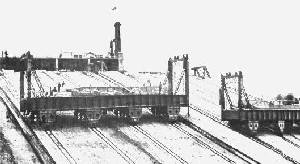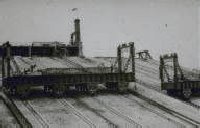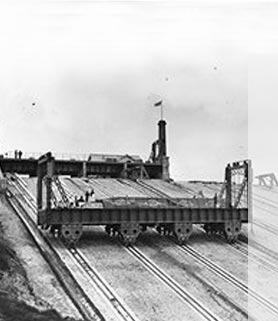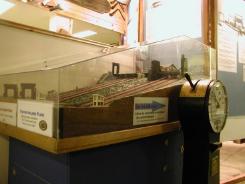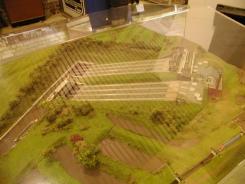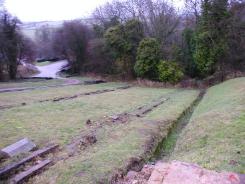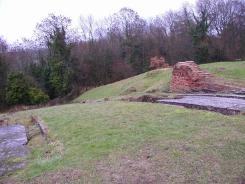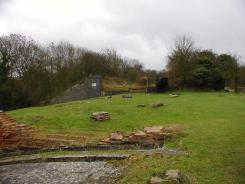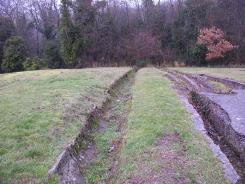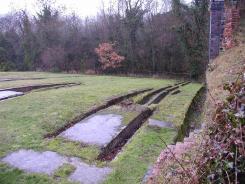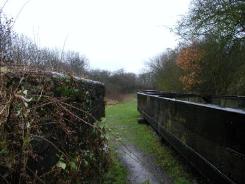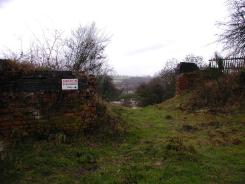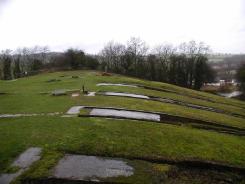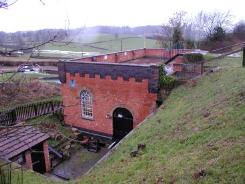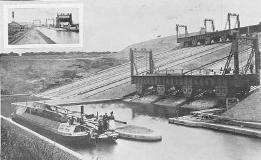Foxton Incline
The lift was designed by Gordon Cale Thomas and built by W H Gwynne of Hammersmith London. It had 2 tanks or caissons, each capable of holding 2 narrow boats or a barge. The tanks were full of water, and balanced each other. The lift was powered by a 25 horsepower engine. A journey time of 12 minutes for 2 boats up and 2 down, improved the speed tremendously, and the same "lump" of water went up and down the hill all day so a very big saving of water was achieved giving better control of this precious resource.
Foxton locks being refurbished in 2000 The lift worked well but, the locks at Watford Gap were never widened, and the traffic didn't increase. This made the lift uneconomic. The locks were refurbished for night traffic in 1909. FMC wanted to use their steam boats for "Fly runs" non stop boating, the crew taking turns to sleep. They could compete with the time tables of the railways.
Winding gear, 1900 In 1911 the Lift was mothballed to save money, the traffic returning to the locks which have been in use ever since. In 1928 the machinery was sold for scrap.
Situated on the Leicester Line of the Grand Union Canal, Foxton Inclined Plane was originally built between 1898 and 1900 to reduce the amount of water used by the existing flight of ten locks and to speed up the transit of boats along the waterway. Foxton is one of only three scheduled inclines in England and it is the only one on a navigable waterway. It was the largest, built with the greatest carrying capacity and its construction alongside the lock flight provides a unique example of the historical development of methods to overcome changing levels on canals. Boats entered wheeled tanks of water caissons measuring 80ft x 15ft (24m x 4.5m) which were then transported sideways on rails between the two levels of the canal, a height difference of 75 feet (22m). Both tanks were moved, one descending as the other ascended. An adjacent steam engine helped to overcome friction and provided extra braking.
For a decade, the inclined plane operated successfully, reducing the transit time from 70 minutes through the lock flight to just 12 minutes. However, the hoped for traffic never materialised and in 1910 the inclined plane was abandoned and the locks reinstated for all traffic.
Situated on the Leicester Line of the Grand Union Canal, Foxton Inclined Plane was originally built between 1898-1900 to replace the existing flight of 10 locks, reduce the loss of water from the locks and speed up the transit of boats along the waterway. Boats entered wheeled tanks of water caissons measuring 80' x 15' which were then transported sideways on rails between the two levels of the canal a 75 feet (22m) difference. Both tanks were moved at any one time, one descending as the other ascended. An adjacent steam engine helped to overcome friction and provided extra braking. For a decade, the inclined plane successfully minimised water loss and reduced transit time from 70 minutes through the locks to just 12 minutes. However, the hoped-for traffic never materialised and, in 1910, the locks were reinstated for all traffic. In 1927, the significant elements of Foxton Inclined Plane were demolished.
